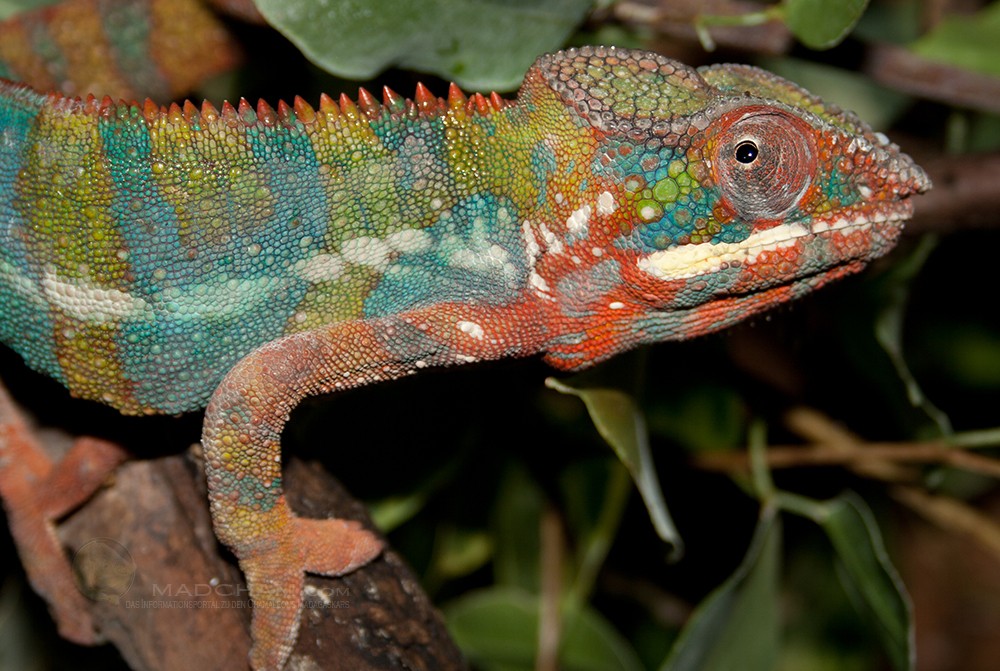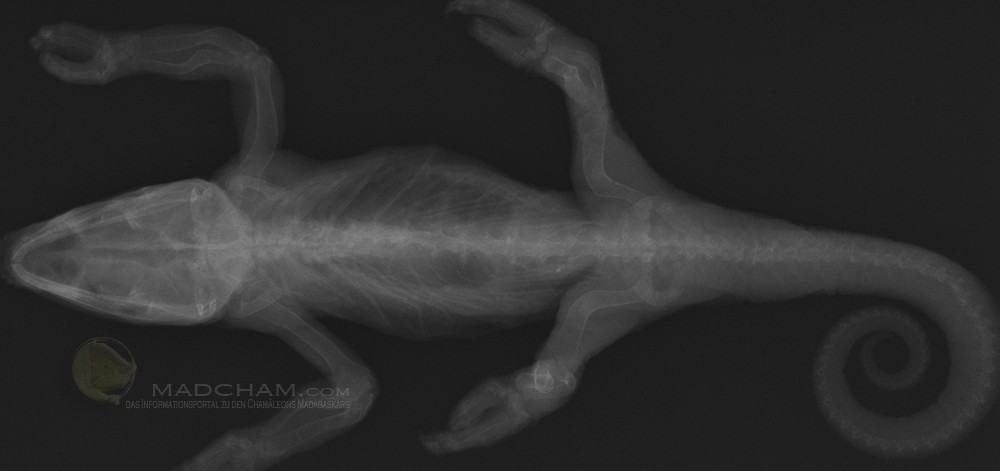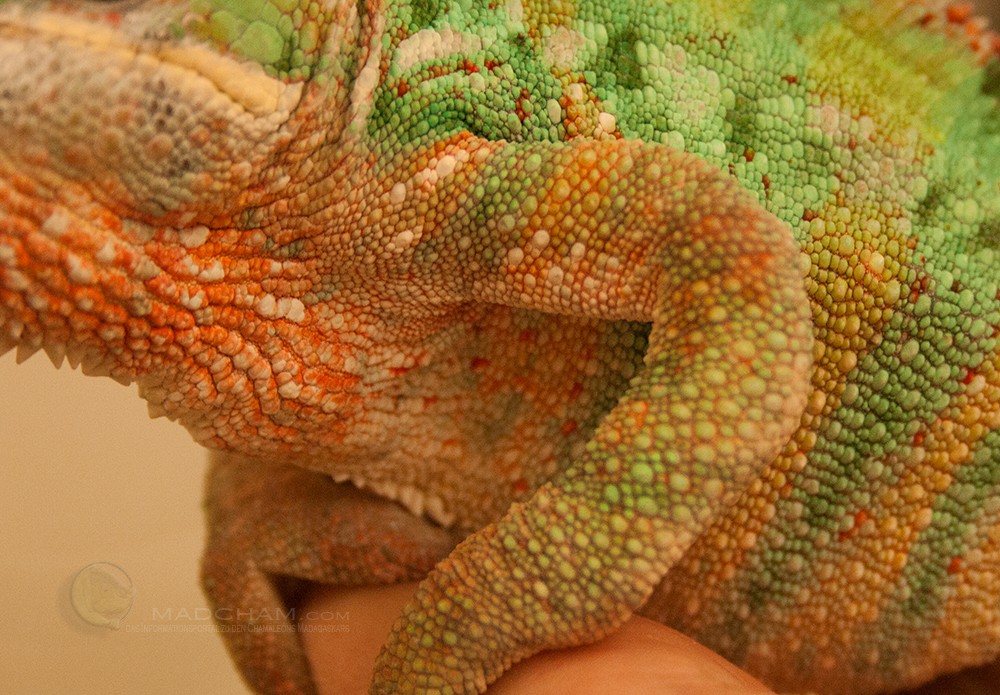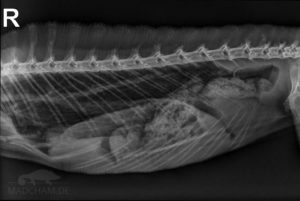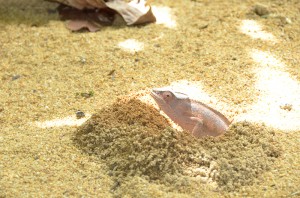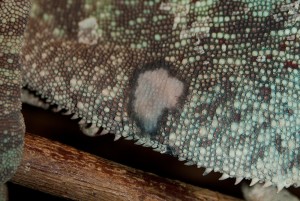What is rachitis?
Rachitis is a disease in which bones demineralize. The medical term for the complex of diseases which includes rachitis is “metabolic bone disease”. MBD also includes several diseases of the adult chameleon. It is called rachitis in animals that are still growing. Sadly, metabolic bone disease is still today one of the most frequent diseases seen in chameleons.
Causes
- Insufficient UV-B radiation:
The most common problem in chameleon keeping. UV-B radiation is vital for chameleons, please see the corresponding article on UV-B. If a chameleon does not receive any UV-B radiation, in short, no calcium can be stored in the bones. Especially in growing animals, this quickly leads to severe rachitis. - Lack of vitamin D3:
A lack of vitamin D3 is the consequence of lacking UV-B radiation but could be compensated by supplementation of vitamin D3 via food. A keeper who does not supplement vitamines although he already uses insufficient UV-B radiation will have a chameleon developing metabolic bone disease as described before. - Lack of calcium:
A chameleon may get enough vitamin D3 or UV-B, but if it lacks calcium, it still will develop metabolic bone disease. Non-existing calcium cannot be integrated into the bones. This is way keepers supplement chameleons in captivity, which means you give calcium and vitamin D3 as a powder over the feeders. By supplementation and sufficient UV-B, you reach the highest safety to protect your chameleon from metabolic bone disease. - Disturbed calcium-phosphorus-ratio:
Many feeders have an unfavorable calcium-phosphorus-ratio. It should be 2:1 in best case. A too high phosphorus level in the blood reduces calcium intake inside the gut. - Congenital diseases of hormone metabolism:
Usually, metabolic bone disease in chameleons is a consequence of poor husbandry. Rachitis or late metabolic bone disease as a result of a congenital synthesis or metabolism disorder is extremely rare.
Symptoms
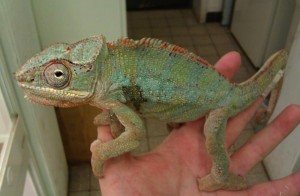
A panther chameleon with severe metabolic bone disease: Several ribs and spine fractures, deformed arms and legs.
Chameleons with a severe metabolic bone disease have strongly bent limbs. The lower jaw and helmet are so soft you can bend it like rubber, that is why it is often called “rubber jaw”. Rachitic chameleons tremble, miss to grab branches, or grab their forearms with their hind legs. In case of severe disease, they cannot climb on branches anymore, but fall down often. Usually, the tongue muscle and the hyoid apparatus are affected, too, so the chameleon cannot shoot its feeders anymore. The extremely soft bones tend to break, many affected animals have fractures of ribs, limbs, or even spine. Many keepers miss first signs, so a lot of chameleons will be shown to a reptile vet in a very advanced stage of metabolic bone disease. Important to know: An adult chameleon can get sick, too! Supplementation and UV-B radiation are necessary for the whole life of a chameleon.
Therapy
Left untreated, metabolic bone disease leads to a torturous death. Since especially fractures are highly painful, a diseased chameleon should urgently see a reptile veterinarian, who will treat the chameleon and advise the keeper properly.
A metabolic bone disease that has been early recognized can be well treated by the vet. With certain infusions (among them calcium), pain killers, etc. he or she can help your chameleon. Some animals need to be hospitalized for successful treatment. Additionally, diseased chameleons get sunbathes for 30-60 minutes per day with Osram Vitalux from a distance of 80 cm. Therapy may last several weeks. Already existing deformities of arms, legs, and helmet will stay life-long. Chameleons that survived a metabolic bone disease usually have a lower life expectancy than healthy ones.
Severely diseased animals with already damaged inner organs and a very bad prognosis need to be redeemed from suffering. Besides treating the animal, it is very important to find the cause for the disease and optimize husbandry.

